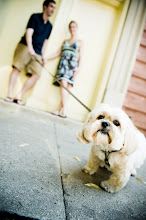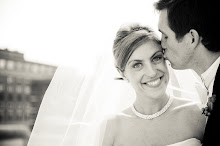 I bet You didn't know Halloween originated in Ireland, did You? If You did, Bravo You! If not, I consider it my duty as an Irish bride to impart knowledge upon You, so settle in and read the story, and consider Yourself edumacated for the day:
I bet You didn't know Halloween originated in Ireland, did You? If You did, Bravo You! If not, I consider it my duty as an Irish bride to impart knowledge upon You, so settle in and read the story, and consider Yourself edumacated for the day:Halloween's origins date back to the ancient Celtic festival of Samhain (pronounced sow-in).
The Celts, who lived 2,000 years ago in the area that is now Ireland, the United Kingdom, and northern France, celebrated their new year on November 1. This day marked the end of summer and the harvest and the beginning of the dark, cold winter, a time of year that was often associated with human death [The Fiancé couldn't agree more!]. Celts believed that on the night before the new year, the boundary between the worlds of the living and the dead became blurred. On the night of October 31, they celebrated Samhain, when it was believed that the ghosts of the dead returned to earth. In addition to causing trouble and damaging crops, Celts thought that the presence of the otherworldly spirits made it easier for the Druids, or Celtic priests, to make predictions about the future. For a people entirely dependent on the volatile natural world, these prophecies were an important source of comfort and direction during the long, dark winter.
To commemorate the event, Druids built huge sacred bonfires, where the people gathered to burn crops and animals as sacrifices to the Celtic deities.
During the celebration, the Celts wore costumes, typically consisting of animal heads and skins [this makes my Miss Muffett costume seem even more inappropriate...hmmm], and attempted to tell each other's fortunes. When the celebration was over, they re-lit their hearth fires, which they had extinguished earlier that evening, from the sacred bonfire to help protect them during the coming winter.
By the 800s, the influence of Christianity had spread into Celtic lands. In the seventh century, Pope Boniface IV designated November 1 All Saints' Day, a time to honor saints and martyrs. It is widely believed today that the pope was attempting to replace the Celtic festival of the dead with a related, but church-sanctioned holiday. The celebration was also called All-hallows or All-hallowmas (from Middle English Alholowmesse meaning All Saints' Day) and the night before it, the night of Samhain, began to be called All-hallows Eve and, eventually, Halloween. Even later, in A.D. 1000, the church would make November 2 All Souls' Day, a day to honor the dead. It was celebrated similarly to Samhain, with big bonfires, parades, and dressing up in costumes as saints, angels, and devils. Together, the three celebrations, the eve of All Saints', All Saints', and All Souls', were called Hallowmas.
text source: history.com




 ...and the matching earrings:
...and the matching earrings: What I kind of like about this is (1) the vintage feel; (2) the fact that arguably I could wear them after the wedding too, like, in real life. Then again, do I want to rewear anything from The Big Day?!
What I kind of like about this is (1) the vintage feel; (2) the fact that arguably I could wear them after the wedding too, like, in real life. Then again, do I want to rewear anything from The Big Day?!



















 And man would it look great in my Irish green wedding... On my right hand....Ah, diamonds and emeralds... the stuff [my] dreams are made of.
And man would it look great in my Irish green wedding... On my right hand....Ah, diamonds and emeralds... the stuff [my] dreams are made of.





 Last (and least), there was Jerell. Oh, Jerell. He wants to channel Austin Scarlett, I think. Sadly, he does not. Flowers on the head?! Really??? His dresses could be amazing... but in the end I think they just look sloppy. Would You ever make your bridesmaid wear that wrinkly little mess of green?!
Last (and least), there was Jerell. Oh, Jerell. He wants to channel Austin Scarlett, I think. Sadly, he does not. Flowers on the head?! Really??? His dresses could be amazing... but in the end I think they just look sloppy. Would You ever make your bridesmaid wear that wrinkly little mess of green?!
 Which, in the end, is why Jerell checked out last night. Anyway, given this wedding diversion, I can hardly wait for next week's finalé part deux... How can you top a feather wedding gown, after all?!
Which, in the end, is why Jerell checked out last night. Anyway, given this wedding diversion, I can hardly wait for next week's finalé part deux... How can you top a feather wedding gown, after all?!














